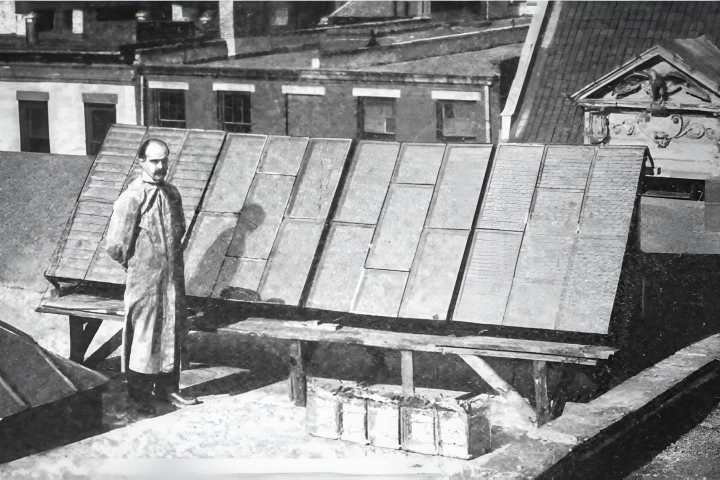Perovskite
-
If you've watched even a single episode of CSI, you'll know how important it is to check suspects and crime scenes for gunshot residue (GSR). A new technique could make that task faster and easier than ever before, by causing GSR to glow green.
-
Since 2012, UK-based Power Roll has been working on a way to print low-cost solar film. It's now one crucial step closer to manufacturing its lightweight film, with a new design for its perovskite solar cells that should drop production costs.
-
Mercedes-Benz has unveiled a list of research programs and future technologies it's working on – including a "new kind of solar paint" it says could generate enough energy for up to 20,000 km (12,427 miles) of driving per year under ideal conditions.
-
From a New York rooftop in the 1800s to their first journey to space. From kidnappings and bribery to a world-changing mistake with an inkwell... Solar panels are one of humanity's greatest inventions, and their history is more fun than you thought.
-
Perovskite materials are poised to take on the reigning champion of solar, silicon, but their stability is holding them back. Now, scientists in China have developed a new type of hybrid perovskite that boasts a very good efficiency over a long life.
-
Random numbers are critical to encryption algorithms, but they're nigh-on impossible for computers to generate. Now, Swedish researchers say they've created a new, super-secure quantum random number generator using cheap perovskite LEDs.
-
Perovskite is quickly gaining on silicon in the solar cell field, but it has one major drawback – durability. Now, a new treatment has been shown to keep perovskite solar cells working at 99% of their efficiency after 1,000 hours of use.
-
The dynamic duo of silicon and perovskite continue their rampage through the solar cell industry. Researchers at KAUST have developed a new silicon/perovskite tandem solar cell with a record-breaking efficiency.
-
The humble X-ray may have received a long-overdue upgrade thanks to the development of a highly sensitive, printable X-ray detector that can operate over a wide range of energy levels, with potential in a wide range of real-world applications.
-
Perovskites are one of the most promising new materials for solar cell technology. Now engineers at the University of Rochester have developed a way to more than triple the material’s efficiency by adding a layer of reflective silver underneath it.
-
Greenhouse gases and plastic waste are two of the biggest environmental problems the world faces today. A new reactor from Cambridge tackles both at once, converting CO2 and used plastic bottles into useful materials, powered entirely by sunlight.
-
Perovskite and silicon are proving to be a formidable duo in the world of solar cells, and now they’ve hit a new record efficiency. A team at Helmholtz Zentrum Berlin (HZB) have developed solar cells with an efficiency of over 32%.
Load More











